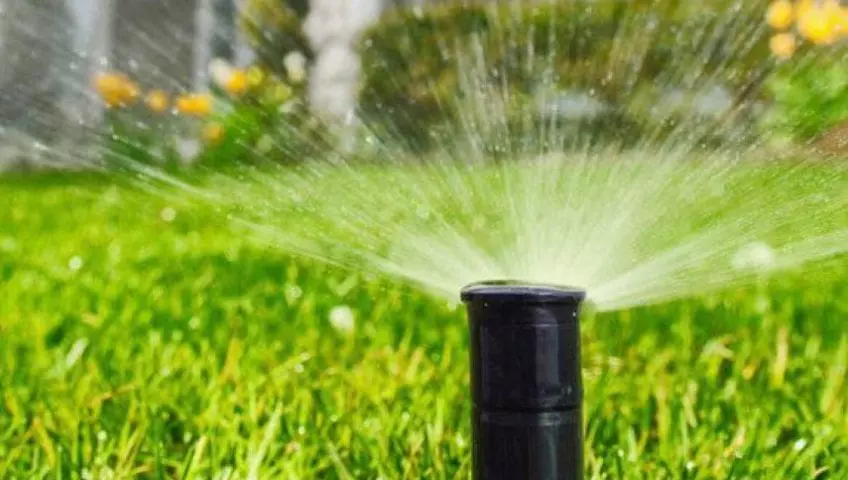To water or not to water in fall? That is the question.
As one of the leading lawn care and landscaping companies in southwest Louisiana, our customers always come to us for information. Most want to know how to take care of their lawns in different seasons. We are glad to help.
One of the most asked questions is whether they should stop watering in the fall. The answer is not as clear-cut as yes or no.
Spring and summer are the seasons of growth and bloom. Most people think these are the only appropriate times to feed the lawn with nutrients and water.
Fall is the season when plant growth slows down. Therefore, the question of whether to water or not to water in fall is genuine and well warranted.
If you have different plants in your lawn, you cannot take a blanket approach for how to treat the lawn in any season. The reason for this is that different plants have different needs.
As part of our landscape maintenance services, we advise a holistic approach, ensuring the overall health of the lawn. Every plant type should be treated individually.
Fall is the time for building strong root systems
In fall, perennial plants and shrubs like lantana, Mexican heather, butterfly bush, rudbeckia, Shasta daisy, shoal creek vitex trees, native willow oak and sweet bay magnolia to name but just a few will be busy building their root network.
Fall comes after the plants have been busy throughout spring and summer building their leaves, flowers and fruits. Thus, in fall, they direct all of their energy to the root system. For this, they will need water.
In fall, your plant roots will anchor themselves firmly waiting for spring and summer. For this too, they need water. There could be some rainfall in autumn, but it might not be enough. Our lawn maintenance services team advises lawn owners to know what amounts of water different plants would need. That way, they can determine how much watering they would need in fall.
Fall dehydration is a big risk for your plants
Because we mostly experience dry autumns, our lawns dehydrate fast. We advise our clients to prepare for fall watering. Those roots will need all the help they can get from you to anchor themselves firmly in the soil.
You can water your lawn a few times a week, and in some weeks, you may not need to water at all. It is best to consult with professional lawn care and landscaping companies. Call us on 313-337-3002 and we will help you determine when to water and when not to.
If the weather is dry or warm in fall, you should water. If it is windy, you should water. These conditions cause your plants to dehydrate, thus starving your roots. You can supplement what the weather has not provided with watering.
As your lawn plants make a transition from active growing to dormancy, the plant juices flow from top to bottom. If the rain stops too soon before all juice can flow downwards, it will dry out.
The result will be plant tissue that is starved of water. If this happens, your plants will be stressed out during fall. When the growing season comes, they may not bloom as robustly as you had hoped they would.
You can help your plants avoid stress by watering them. This will keep their tissue hydrated and encourage the last of the juices containing the nutrients that your roots need to flow down.
What is the worst that can happen when you do not water in fall?
Two things – bad and worse can happen. The bad one is that too little watering or no watering at all may cause the roots to die. Completely!
The worst is that you will not know that your plant roots have died. You will only know in the growing seasons when you notice the absence of healthy bloom. By then it will be too late to rectify the situation.
Lack of water in fall could also make the plants weak and susceptible to diseases, pests and insects in summer. While the trees have deeper reaching roots and may survive dry falls with their health intact, perennials and shrubs may develop a weak root system.
One problem that lawn owners face is not knowing how much water their lawns need in fall. Consult landscape maintenance services to unravel this mystery.
To prepare our customers for fall, we advise them on the best approaches for fall watering as below:
- Water when the temperature is a bit warm. If you water when the temperature is below 40°, the risk of the moisture in the soil freezing is high.
- Water around the noon hour when it is warmer. Water penetrates the soil better at that hour.
- Mulching is very important in summer. It helps retain the moisture in the soil and prevents cracking.
- Too much water is bad in fall.
- Do not water when it is windy.
You have seen how your plant health in summer will be determined by how well you care for them during the cold seasons.
You can also see why you should not skimp on watering in fall, just as grass cutting services advise you.
Definitely, to water or not to water in fall is not a matter of a straight yes or no answer. There are many intricacies involved. With the help of lawn care and landscaping companies, you will know just how much water your lawn needs in fall.


